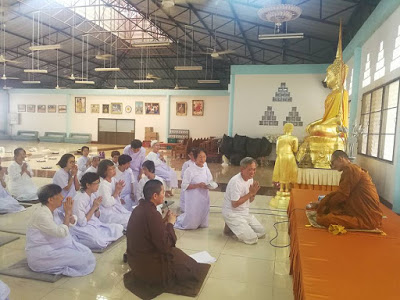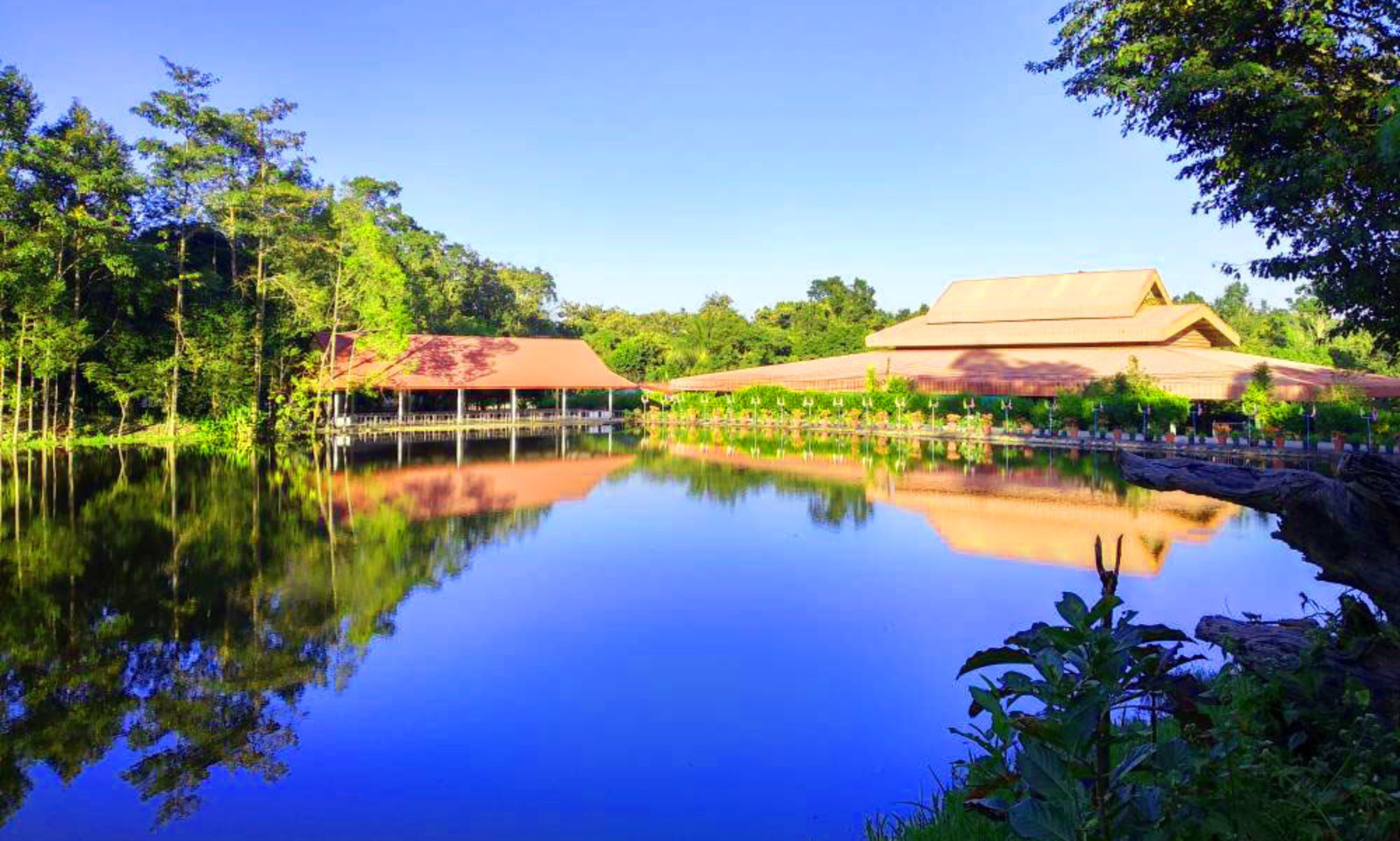Contents
Introduction
Application form
Rules and Regulations
Daily schedule
Advice for students
Accomodation
Packing list – What to bring
Weather, Map and Transport
Passport entry requirements
Every Buddhist temple and monastery in Thailand has its own unique customs and traditions. Therefore, for first-time visitors or students, knowing some of the customs practised at Wat Naluang will help us settle into the routine more smoothly.
1. What to Wear
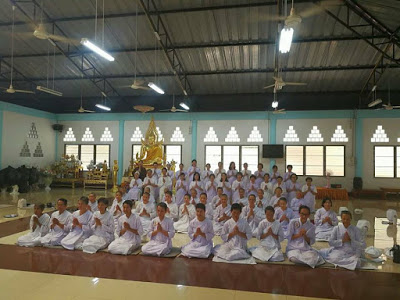 Generally all-white attire is mandatory for both male and female students. Shirts or blouses with sleeves while pants or skirts should be ankle-length. Additionally, women are required to wear a shash. These items may be purchased from the Wat Naluang bookshop (officially opens from 9.00 am to 4.00 pm; break for meal from 8.00 am to 10.00 am).
Generally all-white attire is mandatory for both male and female students. Shirts or blouses with sleeves while pants or skirts should be ankle-length. Additionally, women are required to wear a shash. These items may be purchased from the Wat Naluang bookshop (officially opens from 9.00 am to 4.00 pm; break for meal from 8.00 am to 10.00 am).
2. Almsround (pindapata) and Midday Meal
There will be only one main meal a day with light porridge being served for breakfast.
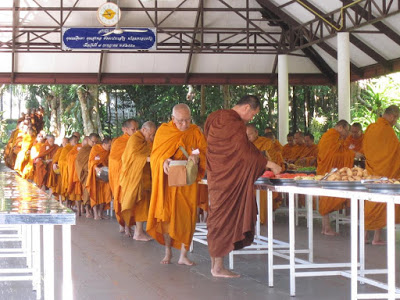
While monks begin the collection of their main alms food at 9.00 a.m., students should be mindful of the time set to gather at an appointed place to begin the mindful walk – bare-footed, along the cemented/concrete path towards the alms food hall.
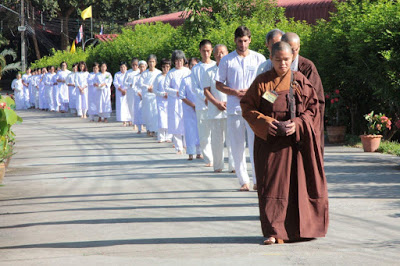
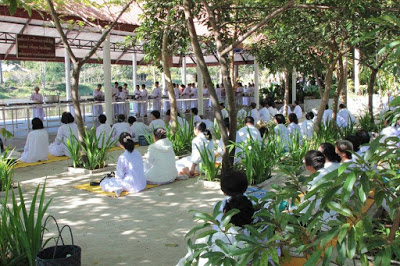
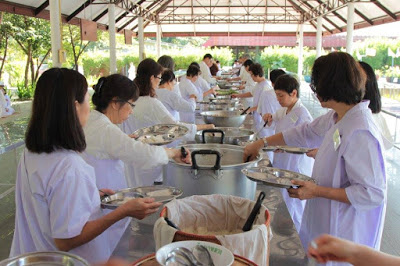
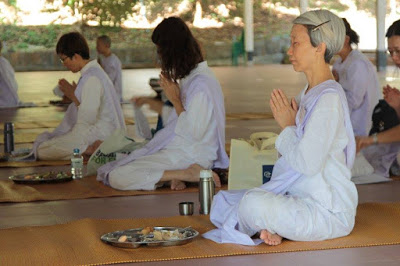
After reaching the hall where we first gathered, place the food tray to our right-hand side, and follow instructions from the monks. The safest way to keep within the “protocols” is not to eat before the monks or nuns and to finish before or at about the same time as them. Place the tray in front of us when eating and return it to our right-hand side after we have finished.
3. Basic Thai Chanting
It is advisable for us to practise the basic chant for taking refuge in the Triple Gem in Thai. This will be chanted while bowing and paying respect to the Buddha, Dhamma and Sangha, and immediately thereafter, to the monks present, at every sessions of meditation, Dhamma talks or gatherings.
Taking Refuge in the Buddha, Dhamma and Sangha
Anjali Wantha Abhiwa Phra-Phood-Tha-Jao Pen-Thee-Pheung Khong-Rao (meaning: The Buddha is our Refuge)
Anjali Wantha Abhiwa Phra-Tham-Ma-Jao Pen-Thee-Pheung Khong-Rao (meaning: The Dhamma is our Refuge)
Anjali Wantha Abhiwa Phra-Song-Kha-Jao Pen-Thee-Pheung Khong-Rao (meaning: The Sangha is our Refuge)
4. Prostrations
We should also practise the traditional way to do the prostrations while uttering the aforementioned chant to take refuge in the Triple Gem.
5. Paying respect to Monks
